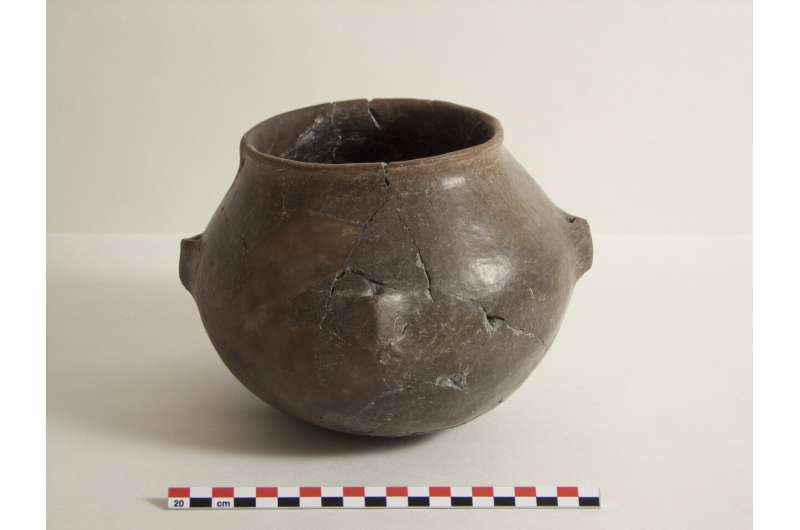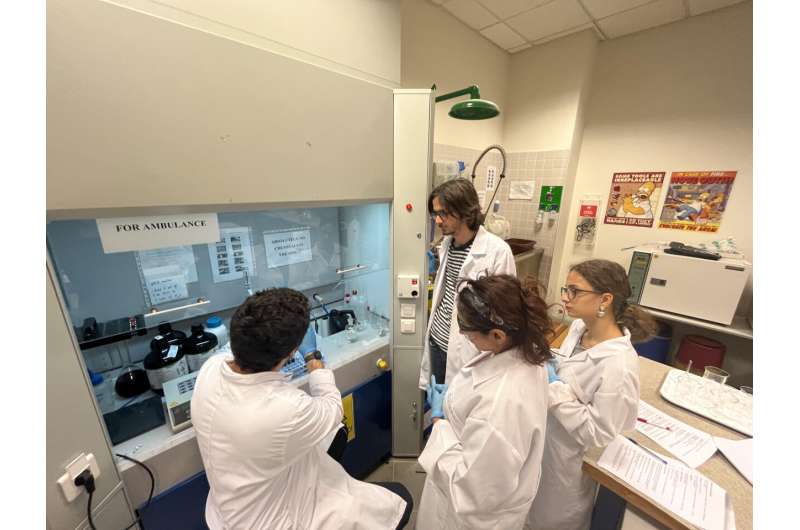This article has been reviewed according to Science X's editorial process and policies. Editors have highlighted the following attributes while ensuring the content's credibility:
fact-checked
peer-reviewed publication
trusted source
proofread
Archaeologists illuminate ancient culinary practices using chemical biomarkers

Ceramic pots endure the corrosive effects of thousands of years, and organic remains preserved inside the pores can shed light on the culture, values, diets, and daily life of societies. This research is achieved with the help of biomarkers.
Dr. Adrià Breu Barcons and Assoc. Prof. Rana Özbal from the Department of Archaeology and History of Art at Koç University recently introduced two new biomarkers to the field. Their article in the Journal of Archaeological Science offers a fresh perspective.
They analyzed pieces of ceramic pottery from Neolithic (Stone Age) excavation sites in the Mediterranean region (from Spain to Türkiye). From these pieces, which date 7,000 to 8,000 years ago, they found some obscure organic compounds. Their presence could not be explained by the chemical reactions that normally occur during the exposure of oils to heat.
"We had some samples with some residues we didn't really understand," says Dr. Barcons, the study's lead author, "We thought maybe they were coming from cooking techniques that thermally alter fat."
As technology and methods of chemical analysis improve, archaeologists can now make even deeper investigations into the function of pots and reach critical findings about our past. After delving deep into the chemistry, Dr. Barcons and Assoc. Prof. Özbal discovered two new chemical reactions that alter fats. To test whether these two reactions would produce the expected results, they mixed organic ingredients such as olive oil and olive leaves with ancient pottery samples and cooked them for various durations at various temperatures.
The analysis of residues at the end of the process did reveal the presence of both components on ceramic fragments and confirmed that they could be made through extended heating of the pots. Thus, their presence on ceramic fragments proved to be a biomarker for prolonged heating in prehistory.
"These compounds are not normally found in nature and can only be created in high temperature, which means they can be used to prove whether ancient pottery had been in contact with the fire," Barcons says. "By doing heating experiments in the laboratory we were able to produce the same chemical compounds that we find in the archaeological pottery, and some of these had never been described before."

These findings add two new biomarkers to the study of archaeological pottery. While heat-degraded animal fats have been found in pottery remains before, this new research revealed two new types of lipids that were detected for the first time. Researchers can now check their dataset to see if they have found these molecules as well.
More information: Adrià Breu et al, Caution! Contents were hot: Novel biomarkers to detect the heating of fatty acids in residues from pottery use, Journal of Archaeological Science (2023). DOI: 10.1016/j.jas.2023.105854
Journal information: Journal of Archaeological Science
Provided by Koc University





















